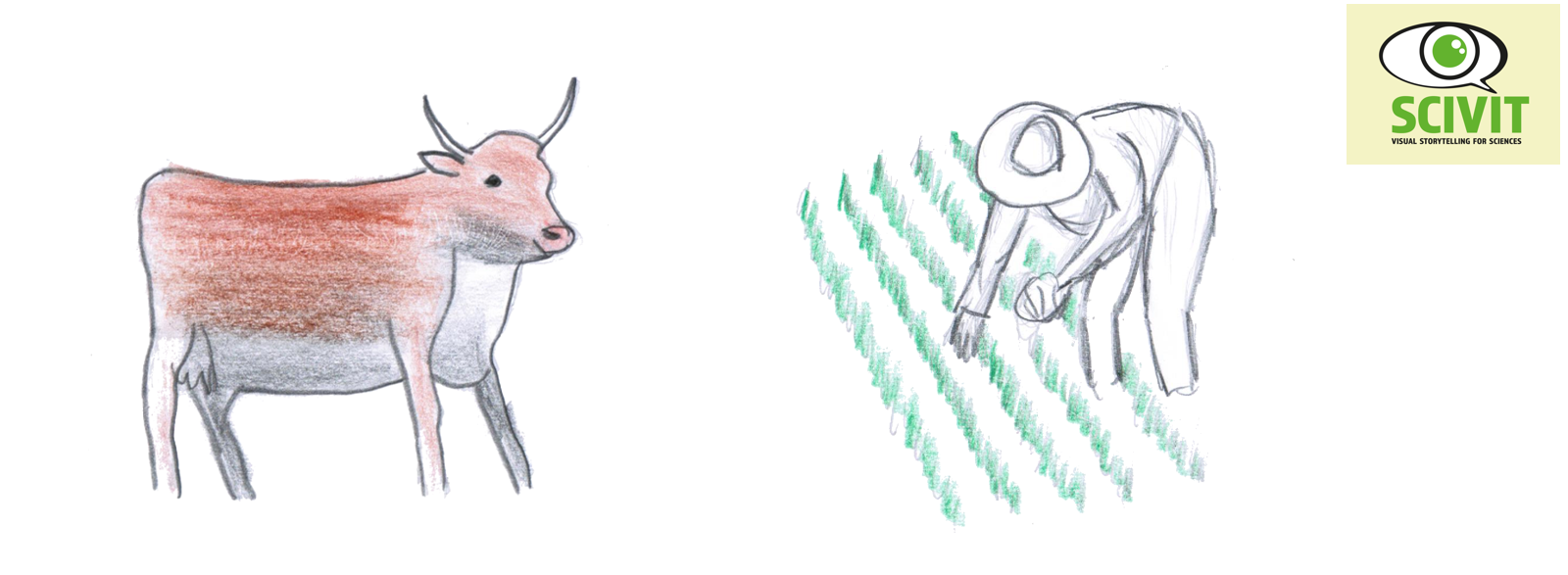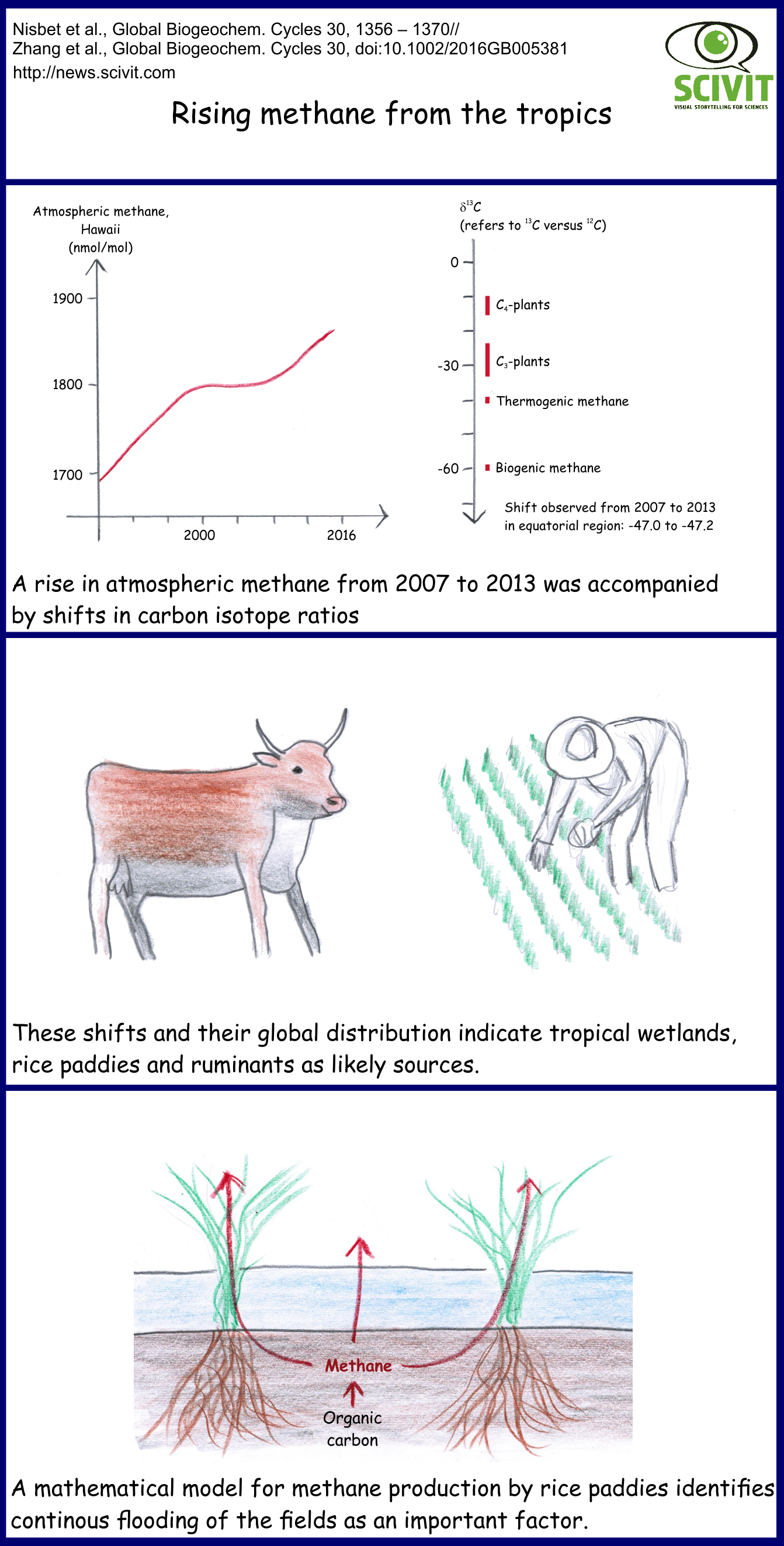
Rising methane from the tropics
Methane as a greenhouse gas
Similar to carbon dioxide, methane is absorbing heat radiation in the atmosphere preventing it from leaving into space. It is doing this much more efficiently when compared to carbon dioxide. Since methane is less abundant in the atmosphere than carbon dioxide, however, it is not the primary factor driving global warming. In addition atmospheric methane is transformed into carbon dioxide with an atmospheric lifetime of about 8 years.
Recent increase in global atmospheric methane
While atmospheric methane was at stable levels between 2000 and 2007, levels have clearly increased since then. To analyze the reasons for this increase, Nisbet and colleagues studied data from regional measurements of methane concentrations and isotope ratios. While measurements from all areas show similar trends, the increase is strongest in the tropical regions. The decrease in the carbon isotope <sup>13</sup>C observed in all measurements argues for biological methan sources and excludes fossil sources. Most likely sources are therefore natural tropical wetlands, rice paddies and ruminants from the tropics.
Methane production by rice paddies
With the importance of methane as a greenhouse gas in mind, Zhang an colleagues established a biogeochemical model for methane production by rice cultivation. The ever-growing area used for rice cultivation and the increasing practice of continous flooding of rice cultures were identified as the main drivers of methane production.
Source: Nisbet et al., Global Biogeochem. Cycles 30, 1356 – 1370//Zhang et al., Global Biogeochem. Cycles 30, doi:10.1002/2016GB005381

Neueste Kommentare